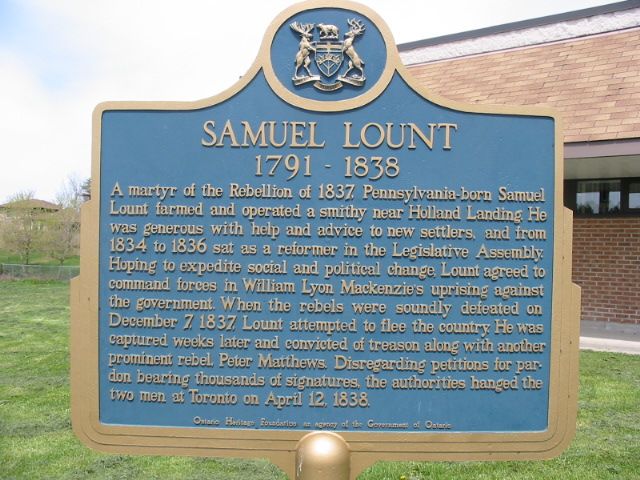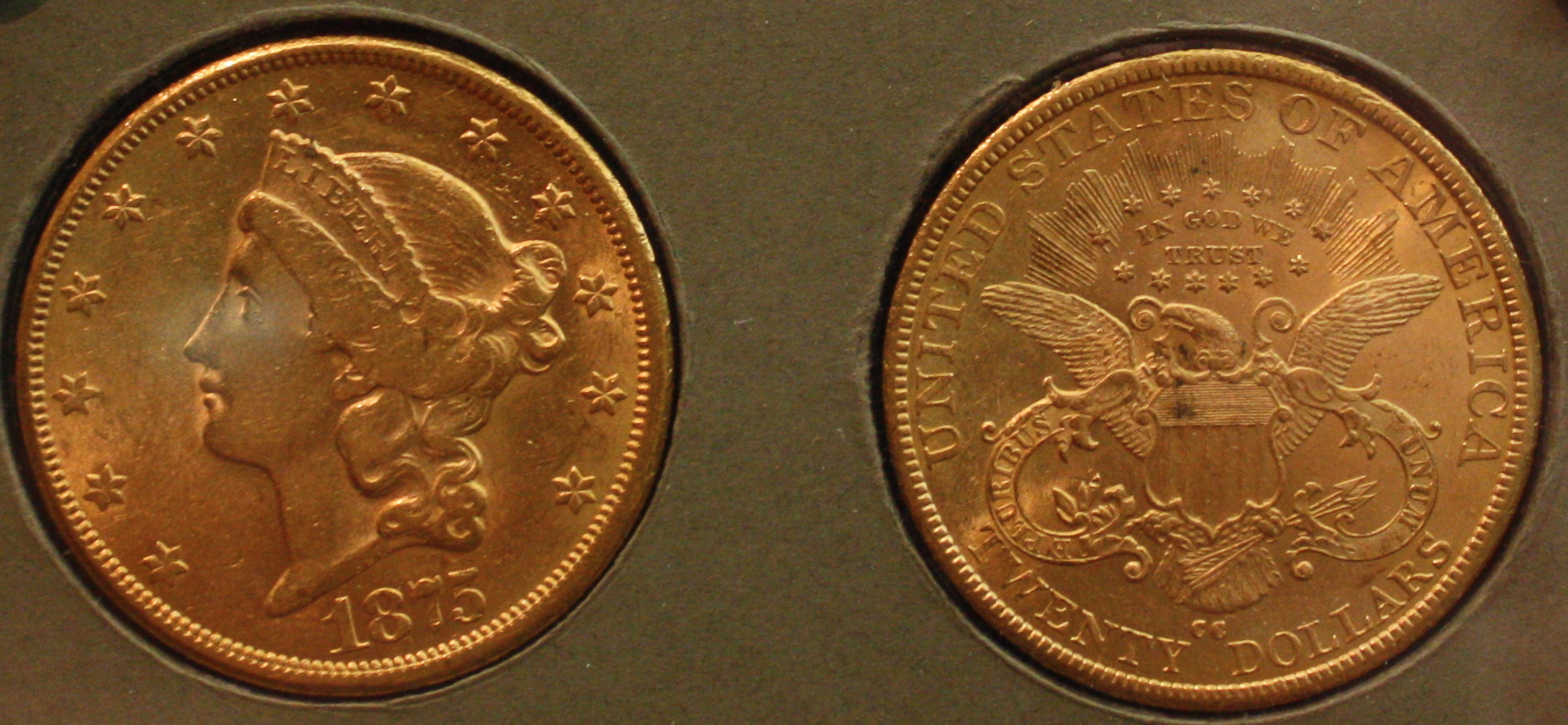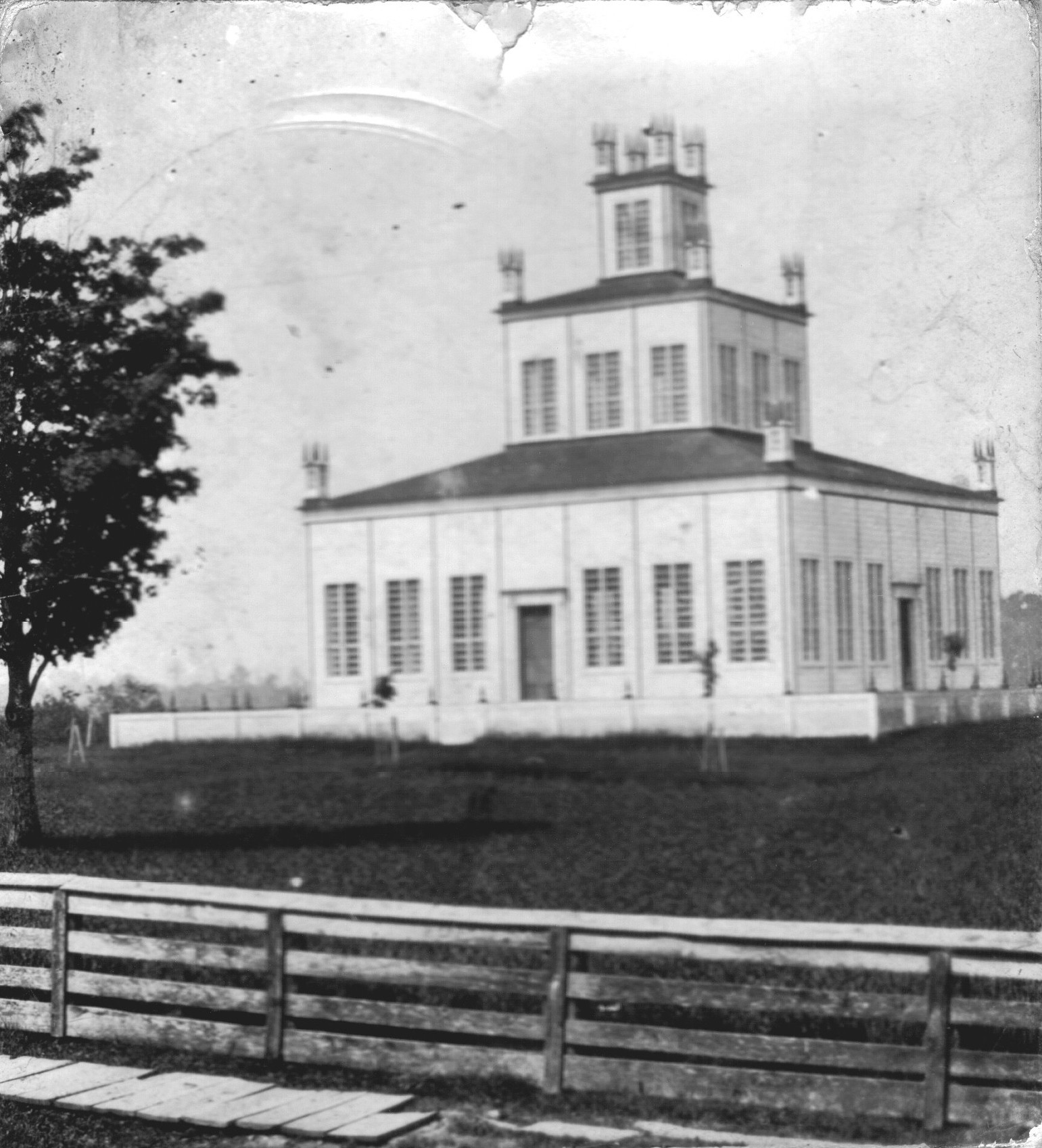|
Charles Duncombe (Upper Canada Rebellion)
Charles Duncombe (28 July 1792 – 1 October 1867) was a leader in the Upper Canada Rebellion in 1837 and subsequent Patriot War. He was an active Reform politician in the 1830s, and produced several important legislative reports on banking, lunatic asylums, and education. Early life He was the eldest son of Thomas and Rhoda Tyrill Duncombe, born July 28, 1792, in Stratford, Connecticut. He studied medicine at the college of the One Hundred and One Members of the Medical Society of the City of New York, graduating in 1819. He then settled in Delaware, Upper Canada, and in 1824 he established the first medical school in Upper Canada with Dr John Rolph, in St. Thomas, under the patronage of Colonel Thomas Talbot. Freemasonry Debates within Upper Canada on the nature of the relationship of the provincial Grand Lodge and the English Grand Lodge paralleled political discussions on the colony's constitution. Those Freemasons who immigrated from the United States favoured a ... [...More Info...] [...Related Items...] OR: [Wikipedia] [Google] [Baidu] |
Charles Duncombe
Charles Duncombe may refer to: * Charles Duncombe (English banker) (1648–1711), English banker, MP and Lord Mayor * Charles Duncombe, 1st Baron Feversham (1764–1841), English MP *Charles Duncombe (Upper Canada Rebellion) (1792–1867), American physician and politician in Canada and USA *Charles Duncombe, 2nd Earl of Feversham Lieutenant-Colonel Charles William Reginald Duncombe, 2nd Earl of Feversham (8 May 1879 – 15 September 1916), known as Viscount Helmsley from 1881 to 1915, was a British Conservative Party politician and soldier. Origins Charles Duncombe w ... (1879–1916), English Conservative MP; known as Viscount Helmsley 1881–1915 * Charles Duncombe, 3rd Earl of Feversham (1906–1963), English Conservative MP; son of 2nd Earl; Viscount Helmsley 1915–1916 See also * Duncombe (other) {{hndis, Duncombe, Charles ... [...More Info...] [...Related Items...] OR: [Wikipedia] [Google] [Baidu] |
Samuel Lount
Samuel Lount (September 24, 1791 – April 12, 1838) was a blacksmith, farmer, magistrate and member of the Legislative Assembly in the province of Upper Canada for Simcoe County from 1834 to 1836. He was an organizer of the failed Upper Canada Rebellion of 1837, for which he was hanged as a traitor. His execution made him a martyr to the Upper Canadian Reform movement. Early life Lount was born in Catawissa, Pennsylvania, United States, in 1791. He was the first son of English immigrant Gabriel Lount (1759–1827), who arrived in Philadelphia in 1773 as an indentured servant, served in the Pennsylvania Militia 1777–1778, then moved to Cape May, New Jersey, about 1782. Samuel's mother Philadelphia Hughes (1765 – c. 1827), was of an early Cape May Presbyterian founding family, the granddaughter of Revolutionary-era Patriot James Whilldin and a direct descendant of Mayflower passengers John Howland and Elizabeth Tilley. The Lounts and the extended Hughes family emigra ... [...More Info...] [...Related Items...] OR: [Wikipedia] [Google] [Baidu] |
Bank Of The People
The Bank of the People was created by radical Reform politicians James Lesslie, James Hervey Price, and Dr John Rolph in Toronto in 1835. It was founded after they failed to establish a "Provincial Loan Office" in which farmers could borrow small sums guaranteed by their land holdings. The Bank of the People was the only bank in Upper Canada not to suspend payments during the financial panic of 1837-8. Many of the shareholders, however, took part in the Rebellion of 1837 and the Family Compact plotted to have it taken over by the Bank of Montreal in 1840. Bank Wars 1835-1838 Chartered vs Joint Stock Banks Until 1835, every bank in Upper Canada required a legislated charter which established it as a legal person able to sue, and be sued at law. Only two Banks had been chartered: the Bank of Upper Canada and the Commercial Bank of the Midland District. Both banks were controlled by the "Family Compact" who used their control of the currency supply and credit to control ... [...More Info...] [...Related Items...] OR: [Wikipedia] [Google] [Baidu] |
Hard Money Policy
Hard money policies support a specie standard, usually gold or silver, typically implemented with representative money. In 1836, when President Andrew Jackson's veto of the recharter of the Second Bank of the United States took effect, he issued the Specie Circular, an executive order that all public lands had to be purchased with hard money. Bentonian currency In the US, hard money is sometimes referred to as Bentonian, after Senator Thomas Hart Benton, who was an advocate for the hard money policies of Andrew Jackson. In Benton's view, fiat currency favored rich urban Easterners at the expense of the small farmers and tradespeople of the West. He proposed a law requiring payment for federal land in hard currency only, which was defeated in Congress but later enshrined in an executive order, the Specie Circular. See also * Gold standard * Silver standard * Bimetallic standard * Bullion coin * Digital gold currency * Fractional reserve banking * Free banking * Hard money (disa ... [...More Info...] [...Related Items...] OR: [Wikipedia] [Google] [Baidu] |
Limited Liability
Limited liability is a legal status in which a person's financial Legal liability, liability is limited to a fixed sum, most commonly the value of a person's investment in a corporation, company, or joint venture. If a company that provides limited liability to its investors is sued, then the claimants are generally entitled to collect only against the assets of the company, not the assets of its shareholders or other investors. A shareholder in a corporation or Limited company, limited liability company is not personally liable for any of the debts of the company, other than for the amount already invested in the company and for any unpaid amount on the shares in the company, if any—except under special and rare circumstances that permit "piercing the corporate veil." The same is true for the members of a limited liability partnership and the limited partners in a limited partnership. By contrast, sole proprietors and partners in general partnerships are each liable for all the ... [...More Info...] [...Related Items...] OR: [Wikipedia] [Google] [Baidu] |
Chartered Company
A chartered company is an association with investors or shareholders that is Incorporation (business), incorporated and granted rights (often Monopoly, exclusive rights) by royal charter (or similar instrument of government) for the purpose of trade, exploration, or colonization, or a combination of these. Notable chartered companies (with years of formation) Austrian British The article ''Chartered Companies'' in the Encyclopædia Britannica Eleventh Edition, ''Encyclopædia Britannica'' Eleventh Edition, by William Bartleet Duffield, contains a detailed narrative description of the development of some of the companies in England and, later, Britain. Dutch English French German Polish-Lithuanian Portuguese Russian *1799–1867 Russian-American Company Scandinavian Scottish Spanish Italian From 3 August 1889 to 15 May 1893 Filonardi was the first Governor of Italian Somaliland and was in charge of an Italian company responsible for the administra ... [...More Info...] [...Related Items...] OR: [Wikipedia] [Google] [Baidu] |
Joint-stock Company
A joint-stock company (JSC) is a business entity in which shares of the company's stock can be bought and sold by shareholders. Each shareholder owns company stock in proportion, evidenced by their shares (certificates of ownership). Shareholders are able to transfer their shares to others without any effects to the continued existence of the company. In modern-day corporate law, the existence of a joint-stock company is often synonymous with incorporation (possession of legal personality separate from shareholders) and limited liability (shareholders are liable for the company's debts only to the value of the money they have invested in the company). Therefore, joint-stock companies are commonly known as corporations or limited companies. Some jurisdictions still provide the possibility of registering joint-stock companies without limited liability. In the United Kingdom and in other countries that have adopted its model of company law, they are known as unlimited ... [...More Info...] [...Related Items...] OR: [Wikipedia] [Google] [Baidu] |
Farmers' Storehouse Company
The Farmers’ Storehouse was Canada's first farmers' cooperative, founded in Toronto and the Home District in 1824. It stood at the centre of a broad economic and political reform movement that, in its essentials, was not greatly different from contemporary movements such as the Owenite socialists in Britain, as well as much later cooperative movements such as the United Farmers of Alberta in the early twentieth century. Context The Farmers’ Storehouse was organized as an unincorporated joint stock company on the 7 February 1824. It was in many ways similar to a large number of consumer-owned community flour and bread "societies" which flourished in England from 1759 to the 1860s. The "Bread societies" which developed in England during the Napoleonic Wars were largely extensions of existing " Friendly societies." Friendly Societies were democratically organized self-help community insurance organizations designed to alleviate tragedies arising from accident, sickness and ol ... [...More Info...] [...Related Items...] OR: [Wikipedia] [Google] [Baidu] |
Bank Of Upper Canada
The Bank of Upper Canada was established in 1821 under a charter granted by the legislature of Upper Canada in 1819 to a group of Kingston merchants. The charter was appropriated by the more influential Executive Councillors to the Lt. Governor, the Rev. John Strachan and William Allan, and moved to Toronto. The bank was closely associated with the group that came to be known as the Family Compact, and it formed a large part of their wealth. The association with the Family Compact and its underhanded practices made Reformers, including Mackenzie, regard the Bank of Upper Canada as a prop of the government. Complaints about the bank were a staple of Reform agitation in the 1830s because of its monopoly and aggressive legal actions against debtors. History Bank of the Family Compact The first Bank of Upper Canada was located on the south-east corner of King and Frederick streets in York, Upper Canada (later Toronto, Canada West). York was then too small for a bank, and its p ... [...More Info...] [...Related Items...] OR: [Wikipedia] [Google] [Baidu] |
Allan MacNab
Sir Allan Napier MacNab, 1st Baronet (19 February 1798 – 8 August 1862) was a Canadian political leader, land speculator and property investor, lawyer, soldier, and militia commander who served in the Legislative Assembly of Upper Canada twice (representing a different county – Wentworth and Hamilton – each time), the Legislative Assembly for the Province of Canada once, and served as joint Premier of the Province of Canada from 1854 to 1856. MacNab was "likely the largest land speculator in Upper Canada during his time" as mentioned both in his official biography in retrospect and in 1842 by Sir Charles Bagot. MacNab was a member of the Family Compact in Upper Canada. He briefly shared a military regiment (the 49th Regiment of Foot) with another member ( James FitzGibbon) in the War of 1812. MacNab was left out of the regiment following regimental cuts after the War of 1812, and found employment in the law office of another Family Compact member's grandfather – ... [...More Info...] [...Related Items...] OR: [Wikipedia] [Google] [Baidu] |
Hamilton, Ontario
Hamilton is a port city in the Canadian Provinces and territories of Canada, province of Ontario. Hamilton has a 2021 Canadian census, population of 569,353 (2021), and its Census Metropolitan Area, census metropolitan area, which encompasses Burlington, Ontario, Burlington and Grimsby, Ontario, Grimsby, has a population of 785,184. The city is situated approximately southwest of Toronto in the Greater Toronto and Hamilton Area (GTHA). Conceived by George Hamilton (city founder), George Hamilton when he purchased the James Durand, Durand farm shortly after the War of 1812, the town of Hamilton became the centre of a densely populated and industrialized region at the west end of Lake Ontario known as the Golden Horseshoe. On January 1, 2001, the current boundaries of Hamilton were created through the Merger (politics), amalgamation of the original city with other municipalities of the Regional Municipality of Hamilton–Wentworth. Residents of the city are known as Hamiltonian ... [...More Info...] [...Related Items...] OR: [Wikipedia] [Google] [Baidu] |
Joshua Gwillen Doan
Joshua Gwillen Doan (1811 – February 6, 1839) was a farmer and tanner who participated in the Upper Canada Rebellion of 1837. He was born in the Sugar Loaf area (now within Port Colborne) of the Niagara District in 1811 to a family of Quakers who had left Pennsylvania before the start of the War of 1812. He began farming and then became a tanner when his brother opened a tannery in 1832. During 1837, he became a supporter of William Lyon Mackenzie. On December 9, 1837, with Charles Duncombe, he organized a group of men to join Mackenzie's revolt in Toronto, not realizing that the revolt had already been put down. On December 13, they were dispersed by loyalist troops led by Colonel Allan MacNab near Brantford. Joshua escaped to the United States. In December 1838, he was part of a raid launched on Windsor by a group of refugees from the Rebellion known as Patriots. Several inhabitants and invaders were killed and a number of the Patriots, including Doan, were taken prisoner. (Se ... [...More Info...] [...Related Items...] OR: [Wikipedia] [Google] [Baidu] |






